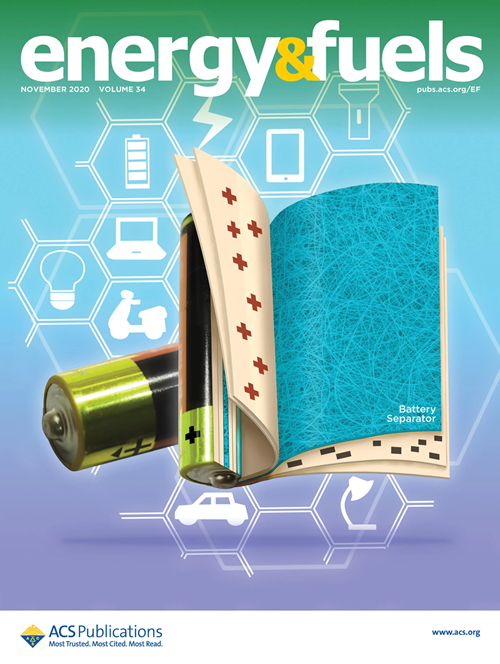废轮胎及其衍生炭样品中锌的定量方法
IF 5.3
3区 工程技术
Q2 ENERGY & FUELS
引用次数: 0
摘要
由于废轮胎及其衍生炭化物样品的独特性质,传统方法无法准确定量这些样品中的锌。本研究开发了一种精确定量废轮胎及其衍生炭样品中锌含量的方法。该方法由定制灰化、硼砂熔融、酸溶解和溶液分析组成,用于锌的定量分析。该方法的新颖之处主要在于专为废轮胎及其衍生炭样品设计的定制灰化程序,最终温度低至 400 ℃,加热速度低至 5 ℃/分钟,并有多个保温阶段。该方法的准确性通过各种已知锌含量的特制标准进行了验证。我们的研究结果清楚地表明,传统方法低估了废轮胎及其衍生焦炭样品中的锌含量,根据废轮胎样品的不同,低估幅度可达 ∼ 21%;而所开发的方法采用定制的灰化程序,可以准确定量各种样品中的锌含量,误差小于 2%。此外,还通过多步萃取法测定了锌的各种存在形式,包括水溶性锌、酸溶性锌和酸不溶性锌,这对于了解废轮胎热化学处理过程中的锌转化至关重要。本文章由计算机程序翻译,如有差异,请以英文原文为准。

A Method for Quantification of Zn in Waste Tire and Its Derived Char Samples
Due to the unique properties of waste tire and its derived char samples, conventional methods are unable to quantify Zn in those samples accurately. This study develops a method for accurate quantification of Zn in waste tire and its derived char samples. The method consists of customized ashing, borax-fusion, acid dissolution, and solution analysis for the quantification of Zn. The novelty of the method mainly lies in the customized ashing program specifically designed for waste tire and its derived char samples, with a low final temperature of 400 °C, a low heating rate of 5 °C/min, and multiple holding stages. The accuracy of the method is validated by various purposely prepared standards with known Zn contents. Our results clearly demonstrate that the conventional method largely underestimates the Zn content of waste tire and its derived char samples by up to ∼21% depending on the waste tire sample, while the developed method with a customized ashing program can achieve accurate quantification of Zn in various samples with an error less than 2%. Moreover, various occurrence forms of Zn, including the water-soluble, acid-soluble, and acid-insoluble Zn, are also determined by a multistep extraction process, which is crucial for understanding Zn transformation during the thermochemical processing of waste tires.
求助全文
通过发布文献求助,成功后即可免费获取论文全文。
去求助
来源期刊

Energy & Fuels
工程技术-工程:化工
CiteScore
9.20
自引率
13.20%
发文量
1101
审稿时长
2.1 months
期刊介绍:
Energy & Fuels publishes reports of research in the technical area defined by the intersection of the disciplines of chemistry and chemical engineering and the application domain of non-nuclear energy and fuels. This includes research directed at the formation of, exploration for, and production of fossil fuels and biomass; the properties and structure or molecular composition of both raw fuels and refined products; the chemistry involved in the processing and utilization of fuels; fuel cells and their applications; and the analytical and instrumental techniques used in investigations of the foregoing areas.
 求助内容:
求助内容: 应助结果提醒方式:
应助结果提醒方式:


